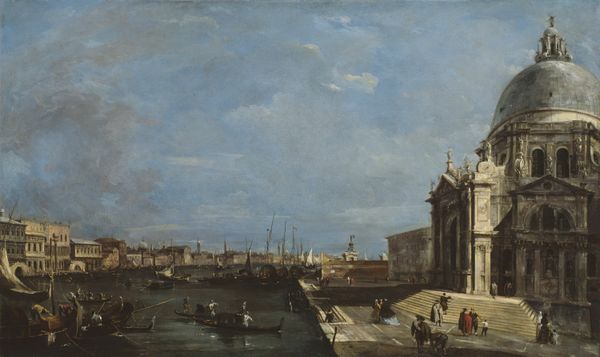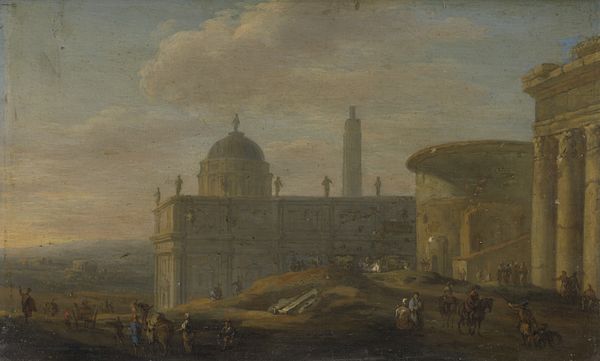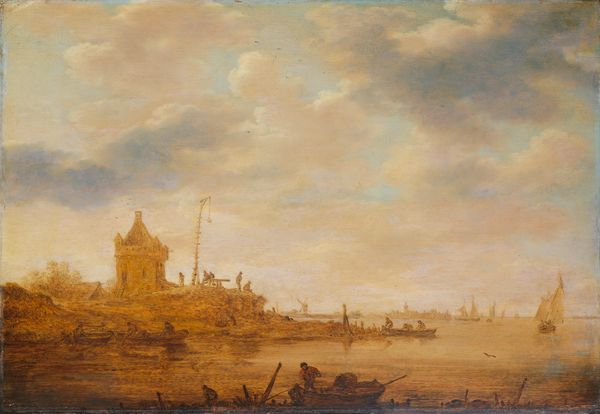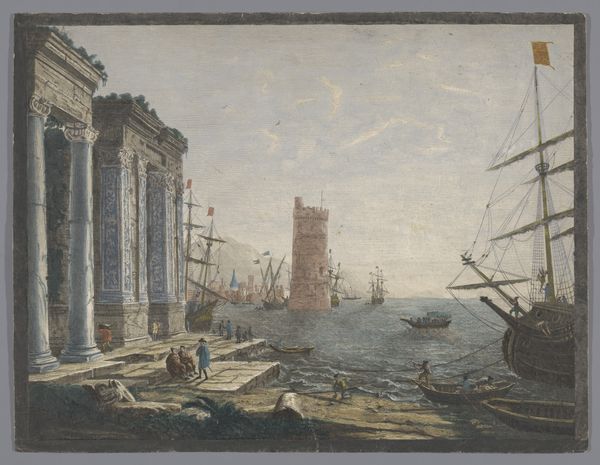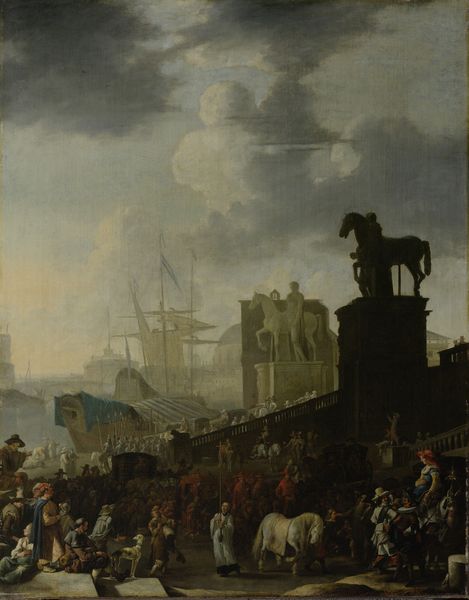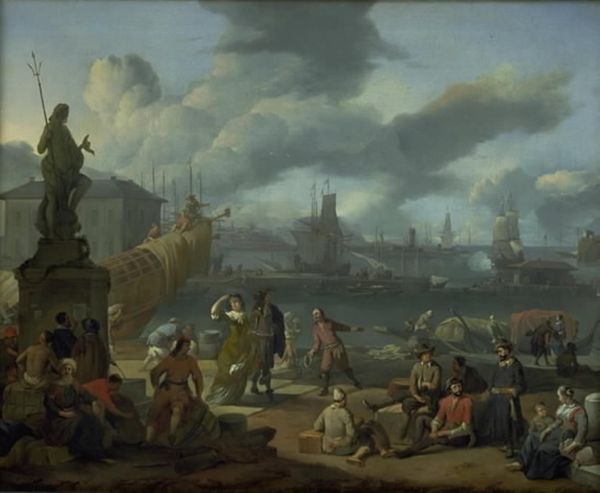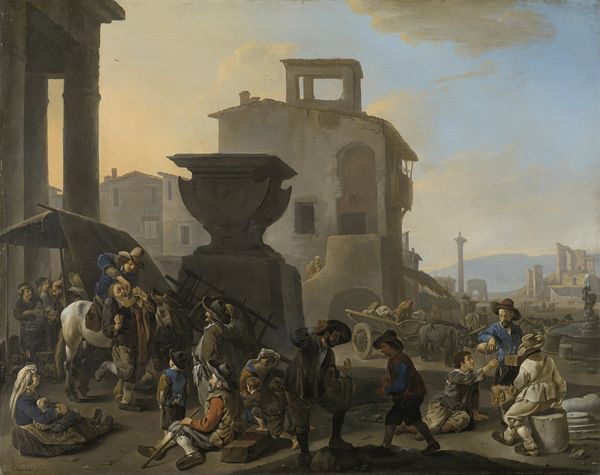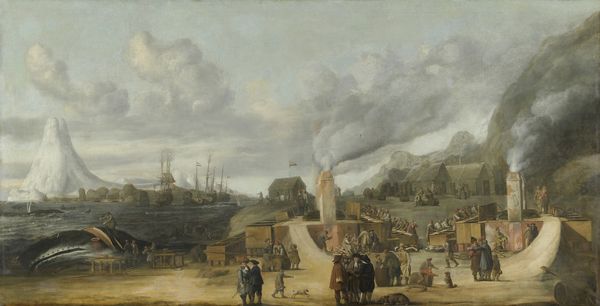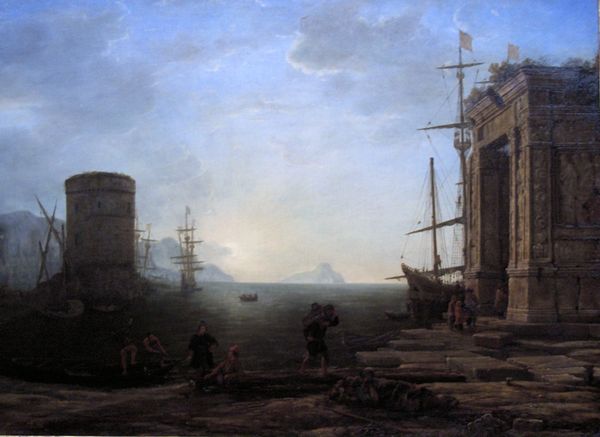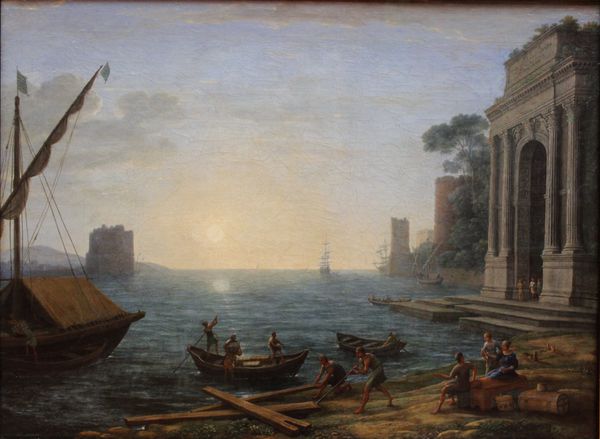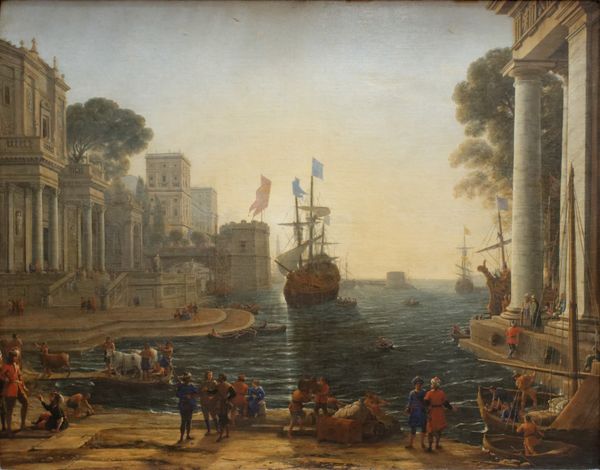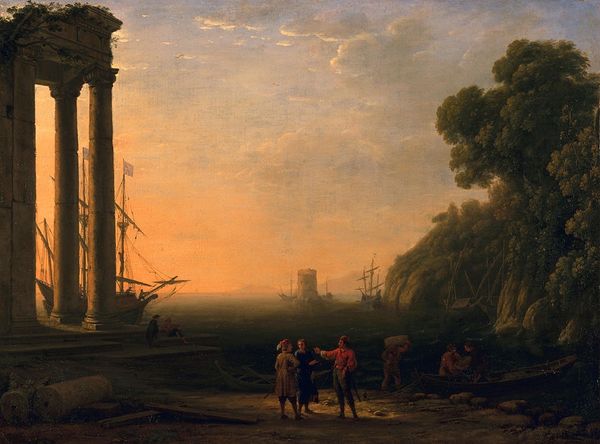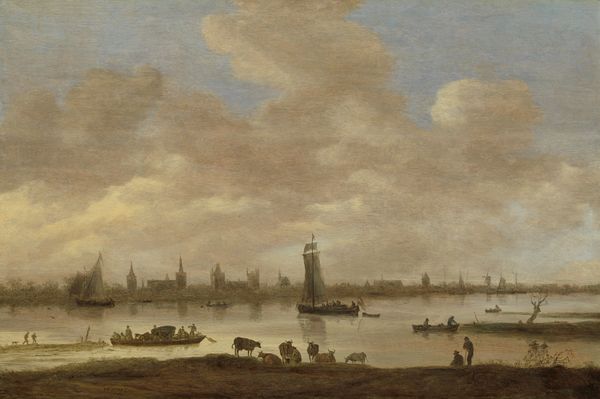
oil-paint
#
baroque
#
oil-paint
#
landscape
#
charcoal drawing
#
oil painting
#
cityscape
#
genre-painting
#
history-painting
#
italian-renaissance
#
realism
Dimensions: height 12.5 cm, width 20 cm, height 17.3 cm, width 25.3 cm, depth 1.5 cm
Copyright: Rijks Museum: Open Domain
Jacob van der Ulft painted this Italian harbor view in the Dutch Golden Age, likely using oil on panel. But what does Italy mean to a Dutch artist? The 17th-century Dutch Republic was a dominant force in trade, and artists like van der Ulft capitalized on a growing market for idealized landscapes of exotic locales. Here, the Italian harbor is not just a place, but a symbol of classical grandeur. The ruins and obelisk evoke Rome's historical importance, while the bustling figures add a sense of contemporary life. Consider the institutional backdrop: artists were part of a competitive marketplace, selling their skills to patrons eager for status symbols. The prevalence of Italianate scenes speaks to a cultural fascination with the past, as well as the desire for a connection to historical events. Historians consult period travel accounts, economic data, and art market records to understand the cultural significance of these works. By exploring these contextual details, we can see how van der Ulft's painting reflects the social and economic conditions of his time.
Comments
No comments
Be the first to comment and join the conversation on the ultimate creative platform.
